Artificial Intelligence in Transportation
Introduction:
The field of transportation may undergo a transformation due to artificial intelligence (AI). Automobiles, trains, buses, and aeroplanes can all benefit from the usage of AI-powered technologies to increase their effectiveness and safety.
Self-driving automobiles are among the most important AI applications in the field of transportation. For road navigation and decision-making, self-driving cars combine a variety of technologies, including computer vision, machine learning, and sensor fusion. These vehicles have the potential to lower the amount of accidents brought on by human mistake, enhance traffic flow, and provide transit accessibility for those who are unable to drive, such as the old or debilitated.
The improvement of transportation networks is a further use of AI. In order to build real-time maps of traffic flow, pinpoint bottlenecks, and suggest routes that can shorten travel times, AI-powered systems can evaluate data from GPS, traffic cameras, and other sources. This can lessen traffic on the highways and increase the effectiveness of public transportation systems.
AI can also be utilised to increase the effectiveness and safety of air travel. AI-powered systems, for instance, can be used to evaluate sensor data from aircraft to find potential flaws and aid in preventing maintenance problems. AI can also be used to streamline flight schedules, save on fuel, and enhance the entire passenger experience.
In addition to these cases, AI has many other potential uses in the transportation sector, such as personalising the travel experience for each passenger, controlling traffic signals, forecasting travel demand, lowering energy consumption, and more. In general, artificial intelligence (AI) has the power to transform transportation, making it safer, more effective, and more accessible for all.
AI BENEFITS ON TRAVELLING:
Over the past few hundred years, there have been numerous changes and revolutions in the transportation sector, and we are now at a point where significant advancements in the form of artificial intelligence are being made.
Whether it is through self-driving cars for greater dependability, road condition monitoring for increased safety, or traffic flow analysis for greater efficiency, AI is capturing the attention of transportation executives all around the world.
Since the global market is expected to reach $3,870,000,000 by 2026, many in the transportation industry have already recognised AI's incredible potential.
Such investments could assist businesses in utilising cutting-edge technology like computer vision and machine learning to influence the future of transportation and improve passenger safety, lower the number of accidents, and diminish traffic congestion.
As we've seen in Glasgow, where the technology tracks vehicle dwell times, parking violations, and traffic density patterns, deep learning and machine learning in transportation can also aid in the creation of "smart cities."
Autonomous Vehicles: Traffic Detection (and Traffic Signs)
Finding pedestrians
traffic flow evaluation
Parking Management Computer Vision Technology
Tracking the state of the roads
Detection of Traffic Incidents Automatically
Recognition of licence plates is automatic.
Driver monitoring
Final Reflections on AI in the Transportation Sector
AUTONOMOUS VEHICLES:
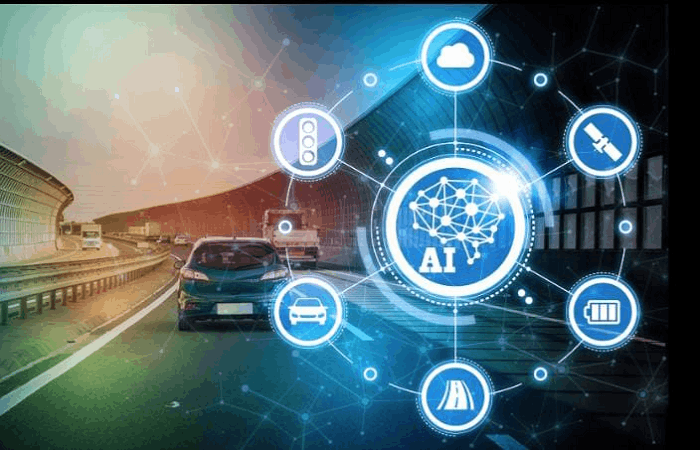
Self-driving car technology is one of the most important uses of AI in the transportation sector. For road navigation and decision-making, autonomous vehicles combine a variety of technologies, including computer vision, machine learning, and sensor fusion. These cars could potentially lessen the frequency of accidents brought on by human error and enhance traffic flow.
Artificial intelligence (AI) is used by self-driving cars, sometimes referred to as autonomous vehicles (AVs), to navigate and make choices without human input. Perception, localization, planning, and control are among the responsibilities of an autonomous vehicle's AI system.
Perception is the process of gathering information about the area around a vehicle using sensors like cameras, lidar, and radar. After gathering this data, the AI system uses it to create a map of the surrounding area and identify items like other cars, people, and traffic lights.
The process of localization involves locating the car on a map. This can be accomplished by combining sensor data with pre-created maps and employing methods like Kalman filters or Monte Carlo localization.
Choosing a safe and effective course for the vehicle to take needs planning, which takes into account the location of the vehicle, a map of the surrounding area, and any restrictions or objectives (such as traffic laws or the destination).
Control entails putting the planned path into action using the actuators on the vehicle. This covers operations including braking, accelerating, and steering.
Assuring that the AI system can manage a wide range of unforeseen events, such as an unexpected pedestrian crossing the road or a construction zone blocking the intended path, is one of the key problems in developing autonomous vehicles. Robust algorithms, a lot of different types of training data, and a careful testing and validation procedure are all necessary for this.
Self-driving car technology is currently being developed and tested by numerous businesses and academics, but it is not yet generally accessible to the general public.
TRAFFIC MANAGEMENT:
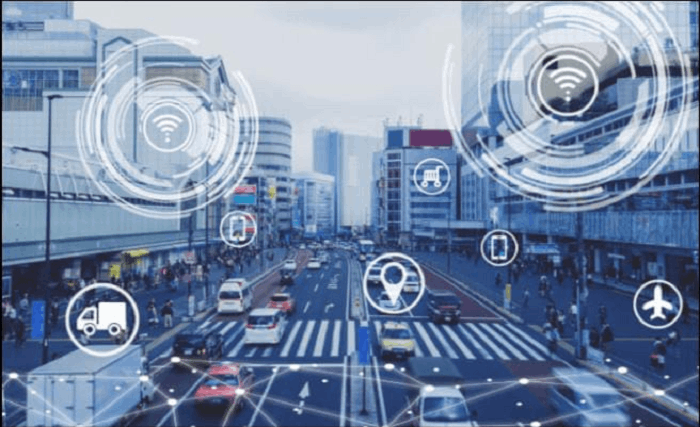
In order to build real-time maps of traffic flow, identify bottlenecks, and suggest routes that could shorten travel times, AI-powered systems can be used to evaluate data from GPS, traffic cameras, and other sources. This can lessen traffic on the highways and increase the effectiveness of public transportation systems.
The term "traffic management" in the context of artificial intelligence (AI) refers to the application of AI algorithms and technologies to enhance vehicle traffic on roads and highways. This can involve activities like traffic forecasting, traffic signal management, and route optimization. Reduced traffic, increased safety, and improved mobility are the three main objectives of AI traffic management.
There are many AI-based strategies for managing traffic, including:
Using historical data, machine learning systems are able to forecast traffic trends and improve traffic signal timing. The safety of crossroads and other high-risk places can be improved by using computer vision algorithms that can identify moving automobiles and people in real-time. The best traffic signal timings can be determined using reinforcement learning algorithms, which can then be adjusted in real time based on traffic flow.
Traffic route design and assignment using optimization techniques such as genetic algorithms, particle swarm optimization, ant colony optimization, etc.
Technologies for connected and autonomous vehicles, which enable vehicles to interact with one another and with traffic infrastructure and to coordinate their movements, can significantly, increase the efficiency of traffic flow.
In conclusion, traffic management in AI refers to the application of cutting-edge technology to enhance the movement of automobiles and people on the road and increase the effectiveness, safety, and sustainability of transportation.
PUBLIC TRANSPORTATION OPTIMIZATION:
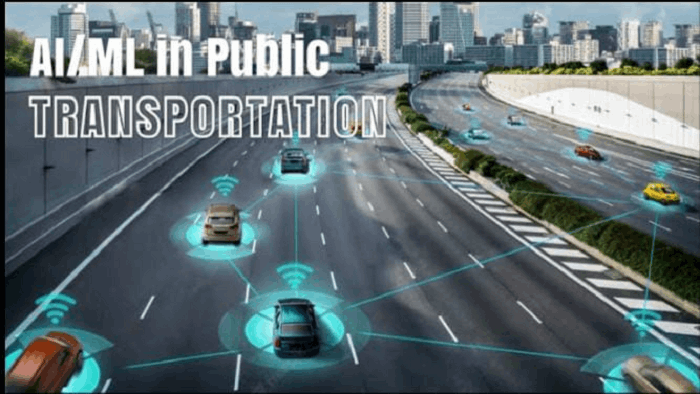
Public transportation timetable and route optimization: AI algorithms can be employed for this purpose. The effectiveness and cost-effectiveness of public transportation can be increased by using AI systems to analyse passenger travel patterns and traffic conditions.
Finding the most effective routes, schedules, and resource allocations for buses, trains, and other mass transit systems is a typical aspect of optimization in the context of public transportation. This can include things like reducing fuel consumption and emissions, shortening passenger travel times, and making the best use of existing resources (e.g., vehicles, tracks, and personnel).
Public transportation system planning and management can be enhanced with the help of artificial intelligence (AI) tools like machine learning and optimization algorithms. AI can be used, for instance, to forecast demand for transportation services, optimise routes and schedules, and boost system effectiveness overall.
Using reinforcement learning to develop a real-time control system for the network of public transportation is one particular example. In order to reduce delays and make the most use of available resources, this can entail modifying the frequency and routes of buses or trains in accordance with demand, traffic, and other circumstances at the time. Another illustration is the optimization of public transportation routes using genetic algorithms. Additionally, there is a tonne of research being done to use route optimization techniques to enhance the last mile connection of public transit.
AIRLINE OPERATIONS:
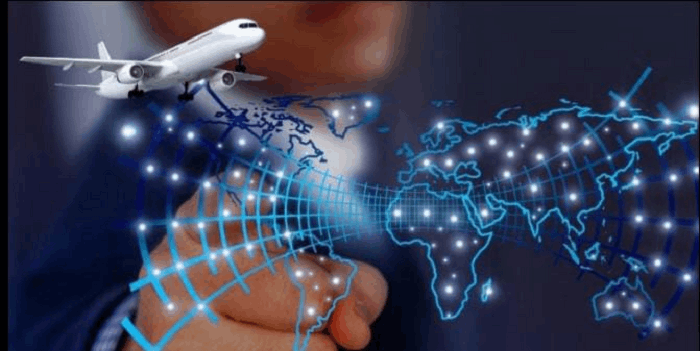
AI can be applied to airline operations to boost their effectiveness and safety. For instance, AI-powered systems can be used to evaluate sensor data from aircraft to find potential flaws and assist in preventing maintenance problems. AI can also be used to optimise flight schedules, save on fuel, and enhance the passenger experience in general.
Artificial intelligence (AI) is used in airline operations, which include flight scheduling, aircraft maintenance, customer care, and revenue management, among other areas. Here are a few particular instances:
AI-powered systems are capable of optimising flight itineraries to cut costs and boost effectiveness. AI may be used to monitor the state of aircraft components and anticipate when maintenance will be required, which can assist airlines in minimising downtime and maintenance expenses.
AI chat bots can be used in customer service to provide clients with information and support, such as addressing inquiries regarding travel timetables or assisting them in booking a flight.
Revenue management: AI-powered systems are capable of analysing data on traveller demand, airfares, and other elements to assist airlines in optimising their pricing and inventory management strategies.
AI can help airlines operate more effectively, save money, and enhance customer satisfaction.
LOGISTICS AND CARGO TRANSPORTATION:
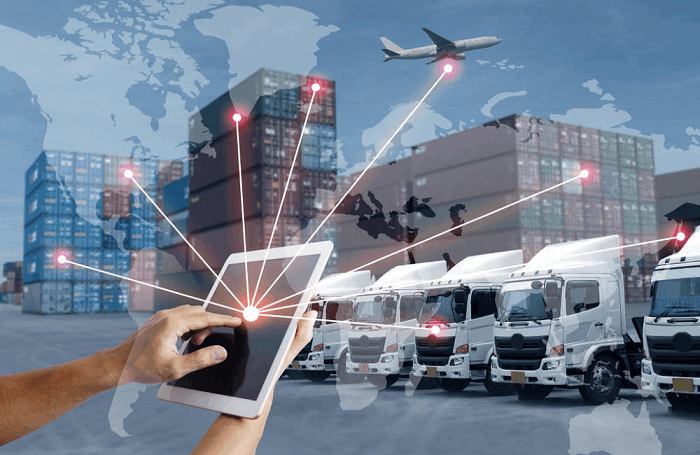
AI algorithms can be used to streamline delivery routes, forecast demand and supply, save on gasoline, and enhance cargo tracking.
Artificial intelligence is used in several elements of logistics and cargo transportation, including route optimization, fleet management, and inventory management. This is referred to as "logistics and cargo transportation" in AI. Several particular instances include:
Route optimization: AI-powered systems can examine traffic, weather, and other data to assist logistics organisations in determining the most effective routes for their cars.
Asset management: By using artificial intelligence to track the location, health, and performance of vehicles in real time, logistics companies can maximise fleet utilization, reduce maintenance costs, and improve safety.
Management of inventory: AI-powered systems can assess data on consumer demand, supplier lead times, and other factors to assist logistics organisations in optimising their inventory levels and reducing stock outs. AI can identify when a piece of equipment requires repair by examining sensor data and previous equipment data; this reduces downtime, lowers maintenance costs, and boosts safety and efficiency.
AI can help logistics and freight transportation businesses increase productivity, save costs, and enhance customer satisfaction.
RIDE-SHARING AND TAXI SERVICES:
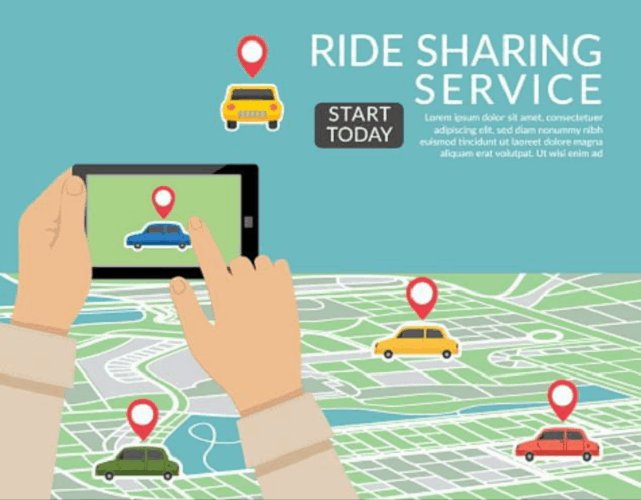
To increase efficiency and decrease wait times for riders, AI can be used to connect riders and drivers, estimate demand, and optimise routes. When we talk about ride-sharing and taxi services in AI, we're talking about how artificial intelligence is used in a variety of areas, including dispatch, route optimization, and customer care. Several particular instances include:
Dispatch: Using AI-powered systems, drivers and passengers can be matched in real-time while taking into account the location of the driver, the availability of vehicles, and the anticipated time of arrival.
AI can assist ride-sharing and taxi services with route planning, taking into consideration variables like traffic, weather, and the destinations of the riders.
Predictive modelling: AI can foresee demand for rides and ensure that there are sufficient numbers of drivers and vehicles nearby during peak periods.
Customer service: AI chat bots can be used to inform and assist consumers, such as by responding to inquiries about anticipated pickup times or assisting them in making a transportation reservation.
Autonomous Vehicles: With the development of AI technologies, businesses are looking at the possibilities of autonomous vehicles for ride-sharing services. This might save labour costs and boost the service's general effectiveness.
Overall, AI can help ride-sharing and taxi services increase productivity, cut costs, and enhance customer satisfaction.
In conclusion, AI has previously been used in transportation to some degree and has shown promise in enhancing effectiveness, safety, and passenger experience. We might see more applications of AI in the transportation sector in the near future as the technology develops and improves.
Importance of Artificial Intelligence In Transportation:
Artificial intelligence (AI) is making people's lives easier and improving many modes of transportation by allowing them to operate autonomously, such as vehicles, trains, ships, and planes, as well as facilitating smoother traffic flow. Research indicates that by 2023, the global AI transportation market will increase by 3.5 billion dollars from its 4 billion dollar value in 2017.
The European Union is enacting regulations to support the technologies that enable the applications of AI in transportation. These regulations cover electronic freight transport information and standardized digital reporting for ships, which are both intended to streamline information exchange processes between ships and ports.
Self-driving cars, autonomous air taxis, smart trucks, smart highways, and other technologies driven by artificial intelligence (AI) are going to be used in many different ways, even if the most spectacular applications are well known to the general public. Although many of them are less striking, they are nonetheless quite helpful.
Artificial Intelligence's (AI) Role in Transportation
Since AI technology was introduced in the transportation industry, many things have slowly changed as a result of the various advancements AI has brought.
Many businesses use artificial intelligence (AI) to forecast collisions based on environmental and other factors, and AI is also used to predict accidents.
The combination of electric vehicles and artificial intelligence (AI) is another fantastic advance. Connect Transit, which employs electric buses with AI integration, is an excellent example of how electric vehicles significantly help in the reduction of environmental pollution because they have a lower rate of emission.
Self-driving automobiles with traffic detection capabilities have also been made possible by artificial intelligence (AI). As the AI-equipped vehicle has the ability to recognize pedestrian and cyclist pathways, self-driving cars will decrease traffic accidents. This vastly improves traffic safety.
Many smart cities around the world use artificial intelligence (AI) traffic management systems to control traffic flow. With the help of AI, drivers can be alerted about risky places on a particular road or route, reducing traffic congestion and resulting in smoother traffic flow. AI can also forecast traffic disruptions and potential security threats.
Disadvantages of Ai In Transportation:
safety concerns. Numerous businesses rely on artificial intelligence to manage vast amounts of data that may contain sensitive information. If the businesses don't invest in top-notch security measures, this could become a significant problem. Even a single security blunder might have serious ramifications for the firms.
High expense: The cost of integrating AI technology into transportation networks can be prohibitive for smaller businesses or local governments to afford.
Lack of human oversight: AI-controlled machines or systems might not have the human intuition and judgement that are often required.
Dependency on data: To operate effectively, AI systems require a significant amount of precise and recent data. If the data is outdated or unavailable, this could be an issue.
Bias and Discrimination: Artificial intelligence (AI) systems have the potential to reinforce and even amplify preexisting prejudices in the data they are trained on, which might result in unjust results for particular groups of individuals.
Privacy issues: Data about people's travel habits and patterns may be gathered, kept, and used without their knowledge or agreement, raising privacy issues with the use of AI in transportation.
AI systems have the potential to automate a wide range of functions that were formerly performed by people, resulting in job loss and socioeconomic disruption.
Now that you've seen the benefits, it's time to discuss the disadvantages of utilizing AI to manage supply chains:
Lack of knowledge: Traditions cannot be instantly replaced. The entire process of adjusting to a new technology takes some time, and some skills must be learned. If someone chooses to pursue AI, they must ensure that they fully understand all of the relevant ideas, from software engineering to data science.
AI Requires Human Assistance: Despite having the ability to do tasks, AI is not a fully independent system. Human support and oversight are required to ensure efficient operation.
Defects Are Difficult to Identify: The basis of AI intelligence is not just data handling; it also involves learning from experience and improving with each task. After a while, it turns into an erratic checking system, which is why it's challenging to spot and identify errors when they occur.
safety concerns: Numerous businesses rely on artificial intelligence to manage vast amounts of data that may contain sensitive information. If the businesses don't invest in top-notch security measures, this could become a significant problem. Even a single security blunder might have significant consequences for the firms.
Cybercrimes:
In addition, as technology has developed, there are more cybercrimes occurring globally, putting businesses that rely on AI in danger. In order to secure the system from errors or cybercrime, it is crucial to keep it updated. Cyberattacks and the hacking of AI systems have the potential to cause major damage to transportation networks.
Implementation:
The application of such models is the other worrying issue. The organization's
Some nations, particularly those in the Third World, do not favor autonomously driving cars. Just launching self-driving cars would necessitate extensive reconstruction and adjustments.
Conclusion:
To conclude, artificial intelligence (AI) has the power to significantly enhance transportation by making it safer, more effective, and more accessible. Autonomous vehicles, traffic prediction and optimization, and intelligent transportation systems are just a few examples of AI-powered technologies that can help decrease accidents, enhance traffic flow, and make transportation more convenient for passengers.
Nevertheless, there remain obstacles to applying AI in transportation, including ensuring the security and safety of autonomous vehicles, addressing ethical issues, and addressing the negative societal and economic effects of such technology. Overall, AI has the potential to significantly enhance transportation, but this potential will only be realized with proper design and implementation.